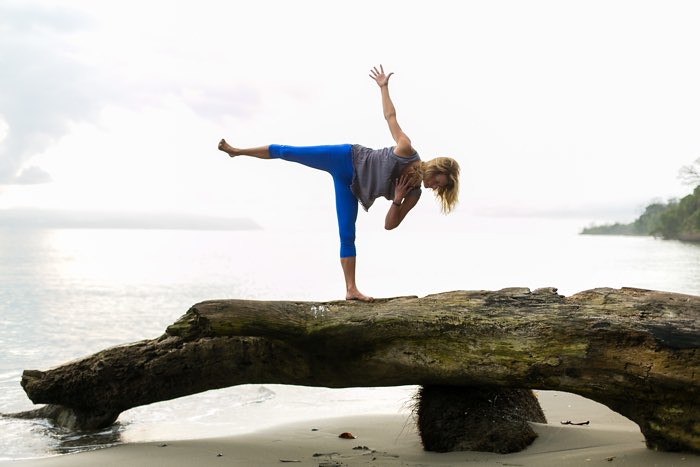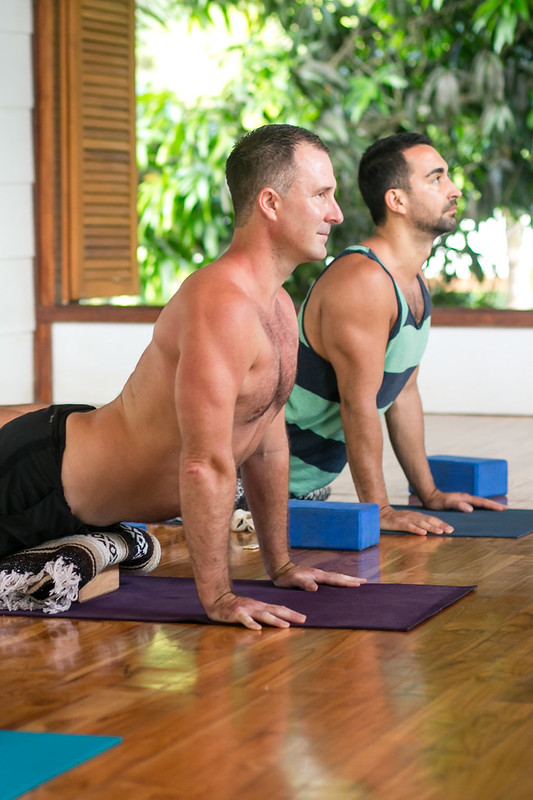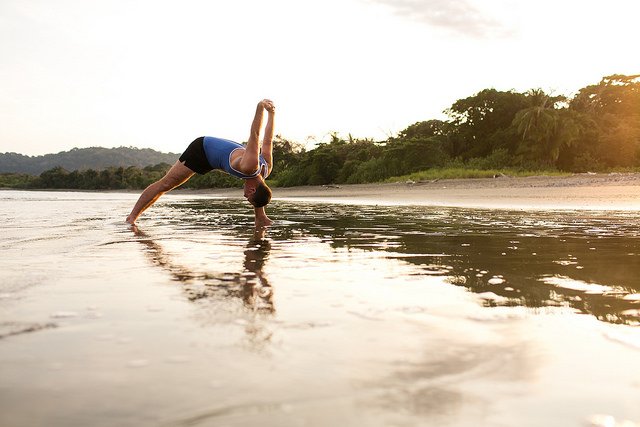I’ve been practicing yoga for a few years, and have learned an awful lot about myself through my practice. Mostly about parts of me that haven’t healed. It’s been a process of taking down the walls I have built around my heart during my life – most notably, emotions and fear.
Have you ever been in a situation where you feel stuck or trapped? I’m referring to both physically and mentally. For example, waiting anxiously for that special someone to text you back. Or not being physically strong enough to move something heavy. For those of us who like to be in control, this can be frustrating. When certain situations arise in our lives that are out of our control, many of us feel like we are losing the plot.
The One Lesson You Should Take From Your Yoga Practice
The Secret For Finding Peace
I have found a method, aside from medication or drugs, to feel at peace when we are in those situations that are out of our control. A trick that prevents me from going crazy in the face of testing times. The secret is remembering to breathe.
Yes, that’s right. Remember to breathe. Throughout yoga, there’s a few things yoga teachers always say… “Breath” or “inhale…exhale”. Most of us forget to breathe correctly because it’s not something we have to remember to do. Our bodies naturally breathe for us to prevent us from suffocating. By remembering to breathe, and focusing on your breath – even just for 5 minutes – you should notice the calming effects for both your mind and body.
If you’ve tried a number of yoga classes with different teachers, you’ve probably experienced a range of teaching techniques. Throughout all these classes you’ll likely notice that they tend to have one thing in common – they challenge you with peak poses that you may find difficult. Sometimes, when you’re asked to hold a certain pose it may make you feel anything but peace. However, the more you focus on how badly you want to get out the pose, the more frustrating it’ll get. This is when you’ll benefit from steady breath. Focus on breathing in through the nose and releasing a steady breath, directing the outward breath towards the tender area. By shifting your concentration to your breath, you’ll begin to notice how the strength of the mind can overcome perceived pain.
More Than Just Moments On The Mat

This practice extends beyond yoga – it’s a lesson that can be applied to any situation where you’re suffering from negative emotions or physical discomfort.
I take this exercise with me wherever I go and it’s proved to be one of the greatest tools I’ve acquired. When life throws us challenges, besides stressing out, what else can we do? Breathe.
It wasn’t too long ago that I experienced a situation that really triggered anger in me. I flew to another country to spend some time with a close friend. For months we were planning this trip. We talked about all the places we were going to visit, and the activities we were going to enjoy. We were both excited and filled with joy. I could feel it.
However, when I arrived things began to take a downward spiral. I was depending on my friend to pick me up from the airport but he didn’t show up. I wasn’t in the best mood. I took a taxi to the hotel but had no Wi-Fi and no idea where I was. He came to the hotel later and apologized, explaining that he hadn’t been able to leave work.
We moved on and decided to make a plan for the rest of the week. A few hours later, his boss called him to say that he would have to work full-time for the entire week. Emotions plunged from excitement to devastation. A number of other upsetting incidents occurred through the week, and I couldn’t take it anymore. I grabbed my yoga mat. It wasn’t until I remembered something important that my attitude towards the situation changed. Something I am now teaching you.

I challenged myself to hold cobra pose for 3 minutes. I learned from my teacher how wonderful this was for your lower back. I felt like I was holding it for ten minutes or so. When I looked at my timer, it had only been one! I was trying to hold it but felt like I was about to go crazy. It was in this moment of despair that I remembered to breathe through the discomfort, and slowly the pain dissipated.
Your yoga practice and real life are no different. The same frustrating moment you experience when you’re holding a challenging pose can feel the same as trying to cope with one of life’s many curveballs. In both of these moments, we are reminded to breathe. Stressing about problems won’t make them disappear. It won’t change people around you or the situation. But, it will change the way you react to them and it’ll affect your happiness. Don’t stress or panic – utilize the tools you’ve acquired and let the breath comfort you.
As soon as I remembered to breathe and practice my meditation, relations improved with my friend. Sure, he still had to work full time and we couldn’t see all the places we were planning to visit. But, what changed was my reaction to this. Instead of feeling frustration and anger towards a situation I couldn’t control, I started to feel peace and acceptance.
They say your yoga practice is never-ending, a path of endless improvement. Remember this next time you roll out your yoga mat. Just like life, there’s going to be moments when you feel like giving up. Don’t give up in either your yoga mat or in life. Just remember to breathe.
Be in the now where you’re not focusing on your thoughts. Allow yourself to be absorbed in the present moment.
Just remember to breath.
About The Author
 Born in Colombia, raised in Florida with a mind full of curiosity on spirituality and how to make the world a better place. Nicole has been practicing yoga since she was 16 years old, ever since she’s wanted to expand her yoga practice which has turned into her ultimate passion. She went to Costa Rica where her practice got deeper and now being a certified yoga instructor, still in Costa Rica, as a writer/blogger and finishing her studies on holistic health. Growing up in a household and group of friends full of support and love is what has allowed her to achieve her dreams and to continue to be where she currently is. Expressing her passions with yoga, writing, health and nature through social media wanting to spread her passion throughout the world, one picture and one message at a time. (IG: @nicoletovz)(FB: Nicole Tovar)
Born in Colombia, raised in Florida with a mind full of curiosity on spirituality and how to make the world a better place. Nicole has been practicing yoga since she was 16 years old, ever since she’s wanted to expand her yoga practice which has turned into her ultimate passion. She went to Costa Rica where her practice got deeper and now being a certified yoga instructor, still in Costa Rica, as a writer/blogger and finishing her studies on holistic health. Growing up in a household and group of friends full of support and love is what has allowed her to achieve her dreams and to continue to be where she currently is. Expressing her passions with yoga, writing, health and nature through social media wanting to spread her passion throughout the world, one picture and one message at a time. (IG: @nicoletovz)(FB: Nicole Tovar)







